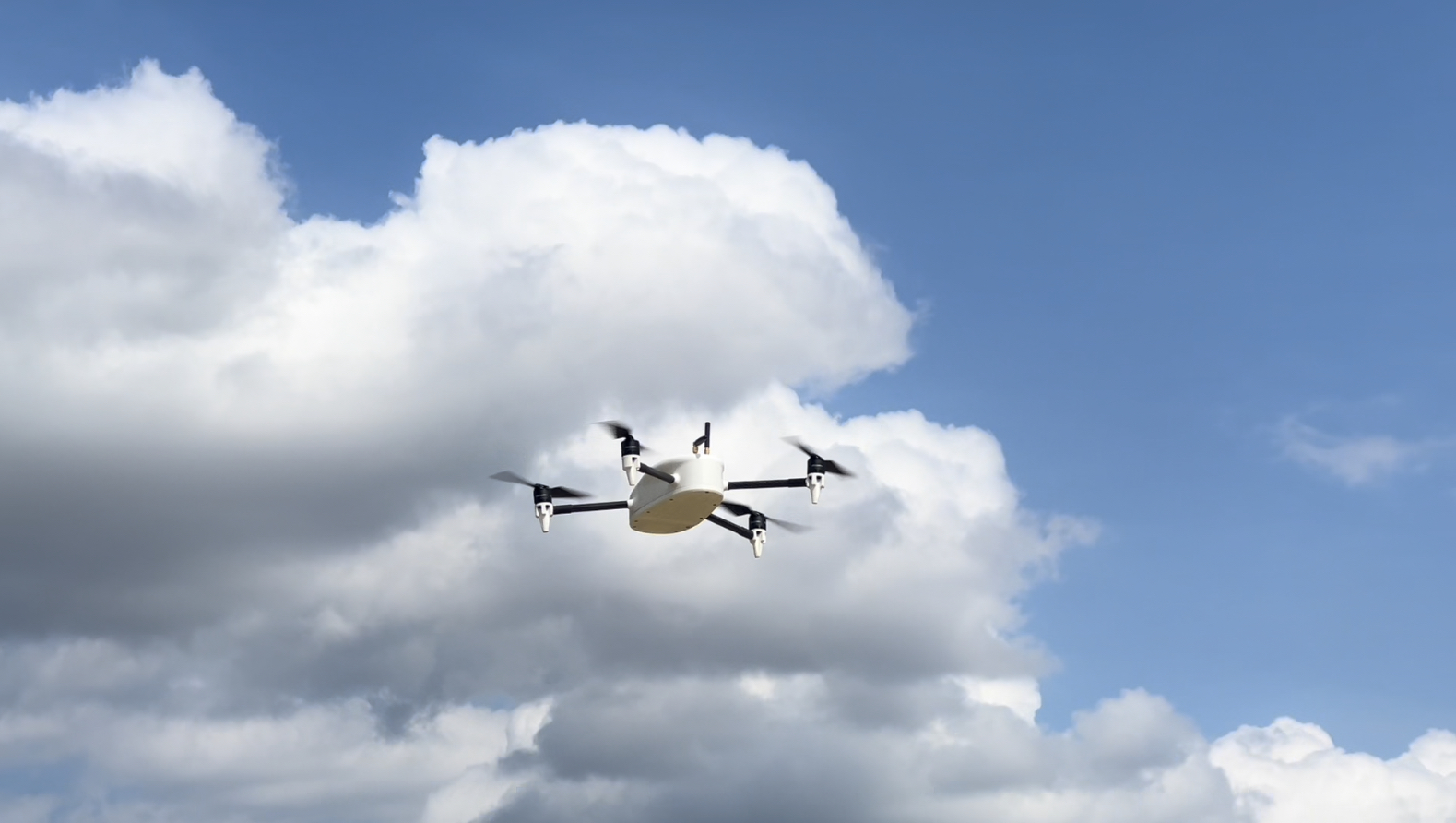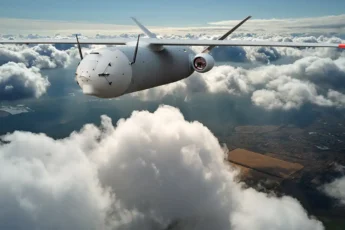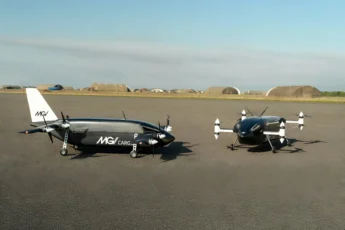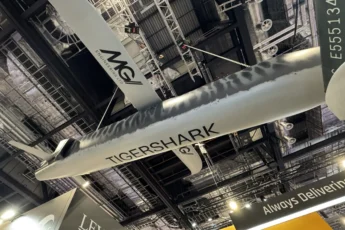Speed has become the new benchmark of military advantage. As threats evolve and technology cycles accelerate, defence organisations can no longer afford multi-year development programmes that risk obsolescence before delivery. Modern forces need platforms that adapt as quickly as the battlespace itself.
Rapid drone prototyping makes that possible — combining digital design, modular engineering, and advanced manufacturing to deliver mission-ready systems in weeks, not years. For MGI Defence, it’s more than an engineering process; it’s a performance-driven philosophy rooted in the precision, pace, and iterative development of Formula One.
From the Track to the Theatre: An Engineering Mindset
MGI’s approach to defence innovation originates from its roots in Formula One engineering, where marginal gains and relentless iteration define success. In that world, components are designed, simulated, manufactured, and tested in continuous loops — sometimes overnight. Applying that same mindset to defence enables MGI to shorten development cycles dramatically.
By integrating high-fidelity simulation, rapid composite fabrication, and modular avionics architectures, new UAV designs can move from digital concept to physical prototype in a matter of weeks. This approach is particularly powerful for autonomous and expendable platforms, where adaptability and low-unit cost are key mission drivers.
Why Speed Matters in the Modern Battlespace
Emerging threats evolve at a rate that traditional acquisition processes simply can’t match. From electronic warfare countermeasures to novel drone swarm tactics, adversaries are iterating faster than many conventional defence programmes can respond.
Rapid prototyping restores tempo to the innovation cycle. It enables designers and operators to test new concepts early, incorporate frontline feedback, and re-engineer solutions before production. This agile process dramatically reduces the risk of fielding outdated systems — and allows defence clients to out-innovate, not just outspend, their opponents.
For example, an operational need for a low-signature reconnaissance UAV might once have required a multi-year programme. With a digital twin design environment and modular airframe tooling, the same capability can now be designed, built, and flown in a matter of weeks — ready for iterative improvement based on real-world data.
The Digital Thread: From CAD to Combat-Ready
At the heart of rapid prototyping lies the digital thread — a seamless flow of data connecting design, simulation, manufacturing, and test.
MGI leverages this data-driven workflow to ensure that every change made in the virtual model is instantly reflected across manufacturing systems and component suppliers. This integration eliminates redundant steps and allows engineers to validate performance virtually before committing to physical builds.
- Digital Twin Simulation – High-fidelity modelling predicts aerodynamic and thermal behaviour, control logic, and structural loads.
- Generative Design Tools – AI-assisted design optimises component geometry for minimum weight and maximum strength.
- Additive Manufacturing (3D Printing) – Rapidly produces flight-ready components, from composite brackets to entire fuselage sections.
- Closed-Loop Testing – Flight data feeds directly back into design models, accelerating refinement cycles.
The result is a true end-to-end digital ecosystem — one that enables MGI Defence to move from concept to prototype flight in as little as 30 days for select systems.
Modular Design for Mission Flexibility
A critical enabler of rapid iteration is modularity. By designing UAVs and effectors around interchangeable payload bays, propulsion units, and communication modules, MGI can reconfigure platforms to suit different mission profiles without starting from scratch.
This modular philosophy allows:
- A logistics UAV to become a signals-intelligence platform with minimal structural changes.
- A one-way effector to be fitted with different warheads or sensors depending on the mission.
- A maritime system such as SeaGlide to share power and control components with land-based drones.
Beyond accelerating design, this approach also simplifies maintenance, training, and field upgrades — essential advantages for forces operating in dispersed or denied environments.
Materials and Manufacturing: Lightweight, Strong, Repeatable
Rapid prototyping relies on materials technology that balances performance with producibility. MGI’s in-house composites expertise allows structural components to be moulded, cured, and assembled in days while maintaining aerospace-grade strength and stiffness.
Combined with precision CNC machining and additive manufacturing, this enables a hybrid build process where carbon fibre, aluminium, and polymer components are merged into a lightweight, repeatable structure.
By maintaining direct control of tooling and fabrication, MGI can:
- Iterate aerodynamic forms without external supplier delays.
- Produce multiple airframes simultaneously for parallel testing.
- Scale up to low-volume production runs seamlessly once a design matures.
This vertically integrated model ensures that innovation isn’t limited by external bottlenecks — a critical differentiator when rapid operational response is needed.
From Prototype to Production: Iteration at Scale
Speed alone isn’t enough; prototypes must translate into reliable, scalable systems. MGI’s prototyping process is designed with manufacturability in mind from the first CAD line. Every design iteration includes validation for production efficiency — assessing part count, assembly time, and maintainability.
Once a design achieves the desired performance metrics, MGI’s flexible manufacturing infrastructure allows immediate transition from prototype to production, without re-engineering or re-tooling.
This process ensures continuity between development and delivery, shortening the time between concept demonstration and operational deployment — a decisive advantage in the modern defence landscape.
Reducing Risk Through Iterative Testing
Traditional aerospace programmes often defer full-system testing until late in development, when design changes are expensive and time-consuming. Rapid prototyping reverses that model. Early and frequent testing provides real-world validation long before final production, reducing both cost and technical risk.
MGI conducts iterative test campaigns using instrumented prototypes that capture structural, thermal, and aerodynamic data. Each test flight informs the next design revision — closing the loop between engineering and field performance.
This methodology is particularly valuable for autonomous drones, where AI flight control and navigation algorithms benefit from real-world training data. Rapid prototyping allows MGI’s software engineers to refine autonomy stacks in parallel with hardware evolution.
Empowering Defence Clients with Agility
For MGI’s defence clients, the value of rapid prototyping extends beyond technical efficiency. It delivers operational agility — the ability to respond to emerging mission needs with tailored solutions, without waiting for multi-year procurement cycles.
Clients can engage early in the design loop, define specific payload or performance goals, and see functional prototypes delivered within weeks for evaluation. This partnership model transforms how militaries approach capability development, moving from specification-driven procurement to collaborative innovation.
In practice, this means:
- Faster delivery of mission-ready UAVs for trials and exercises.
- Shorter feedback cycles between operators and engineers.
- The ability to field niche capabilities cost-effectively, without committing to full-scale programmes.
Building the Future of Defence Innovation
The modern battlespace demands adaptability — and adaptability depends on speed. Rapid drone prototyping embodies that principle, providing a bridge between imagination and implementation.
For MGI Defence, it’s not just a process; it’s a philosophy rooted in performance engineering and continuous improvement. By harnessing the same rapid-iteration principles that define elite motorsport, MGI is helping defence clients meet the moment — creating autonomous systems that evolve as fast as the threats they counter.
From one-way effectors to heavy-lift UAVs, every new platform benefits from this approach: tested faster, refined smarter, and deployed sooner. As the pace of conflict accelerates, rapid prototyping will define the next generation of defence capability — and MGI is already leading that transformation.






